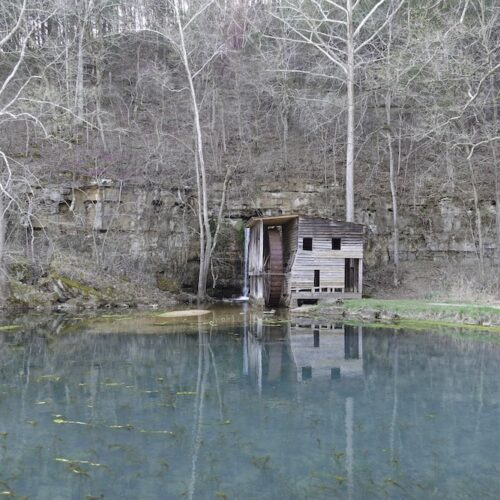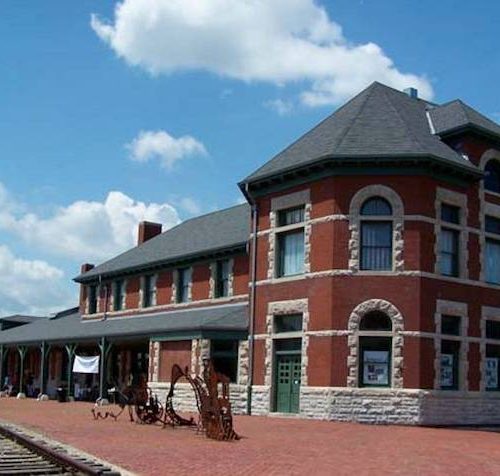Cape Girardeau began at the river’s edge, back in the days when French fur traders started using the settlement as a port on the Mississippi River in the early 1700s. You still can see Cape Girardeau’s European influence in the downtown area near the river, and from there, it sprawled into a small city in the Midwest. As with many cities along the Mighty Mississippi, there exists a floodwall, aka the Great Wall of Cape Girardeau.
The Great Wall of Cape Girardeau
The Great Wall of Cape Girardeau is more than wall that protects the city from the river. It also displays the city’s history in colorful mural paintings. But first, here’s a little information on the great wall. Construction on the almost 1.3-mile, 16-foot-tall floodwall started in 1956, and finished in 1964 at a cost of $4 million.
On April 14, 2021, the city, along with the Saint Louis District U.S. Army Corps of Engineers, celebrated the completion of 15 years of wall improvement projects – such as rock berm stabilization, flood wall joint repairs, soil stabilization, two new pump stations and miscellaneous other tasks – at a cost of almost $20 million (“Dredging Today,” April 12, 2021).
In this video, which features some of the recent work done on the wall, you can get a scope of the project and of the great wall, itself.
There is talk in Cape Girardeau of redoing some of the floodwall’s murals on the river side.
A Walk along the Great Wall of Missouri
There are two sets of murals adorning the wall that faces the city. One is titled “Mississippi River Tales” and the other is the “Missouri Wall of Fame.”
Mississippi River Tales
In Mississippi River Tales, Cape Girardeau’s history is depicted in 24 panels covering approximately 1,100 feet. It begins with reference to Native Americans, of which there were more than 20 tribes in the early 1700s in this area. Later, the wall depicts the Trail of Tears injustice. Although I’m not a huge fan of Wikipedia, this set of photos of the murals does this artwork justice and tells local history accurately, or so it seems.
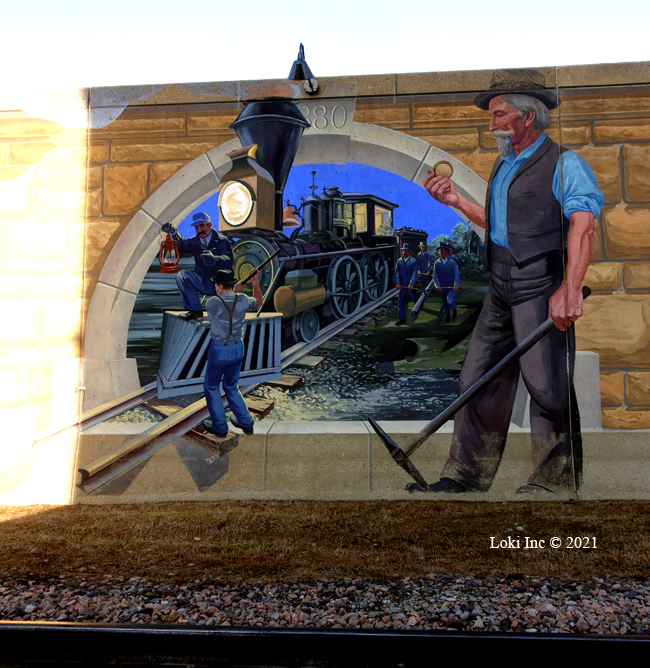
This mural depicts “The Coming of the Railroad” (1880): A plaque in front of the mural reads: “After earlier attempts to bring a railroad to Cape Girardeau failed, local attorney Louis Houck made an arrangement with creditors to bring a railroad into the city by midnight of January 1, 1881. If he could do so, he would acquire clear title to the properties of the failed railroad. Running short of rails and time, Houck divided his men into two crews one building from the west, the other from the east. His men borrowed rails and ties from the abandoned rail line to the north and were able to build sufficient track to connect with the crew coming form the Delta. Slowly, the engine moved forward. The last rail was put in place one hour before midnight, and the engine arrived in a sleeping Cape Girardeau at 2 a.m. on the New Years Day. Cape Girardeau had a railroad!”
Each mural is highlighted with an interesting account of history on a plaque set in front of it. Chicago artist Thomas Melvin took lead on this project, and painted the panels, along with local artists. The mural was dedicated in July 2005.
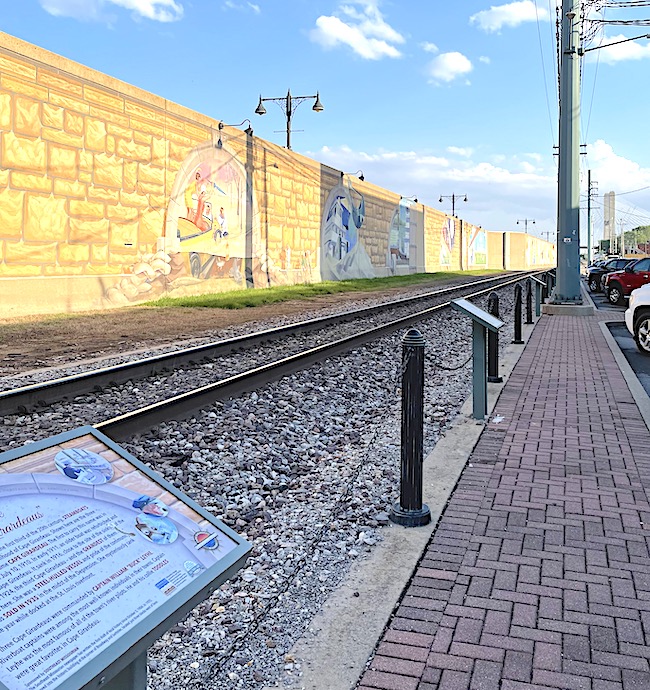
Missouri Wall of Fame
The 500-foot-long Missouri Wall of Fame contains 45 panels with 47 famous Missourians. It was painted in 1995, by Margaret Dement, a local artist. You can check the list here. It includes notables such as Marie Watkins Olive, a native Cape Girardin who designed the Missouri state flag and hometown talk radio champion Rush Limbaugh, among others such as Scott Joplin, Mark Twain, Walter Cronkite, Betty Grable, John J. Pershing, Ginger Rogers and the list goes on. Actually, it might surprise you.
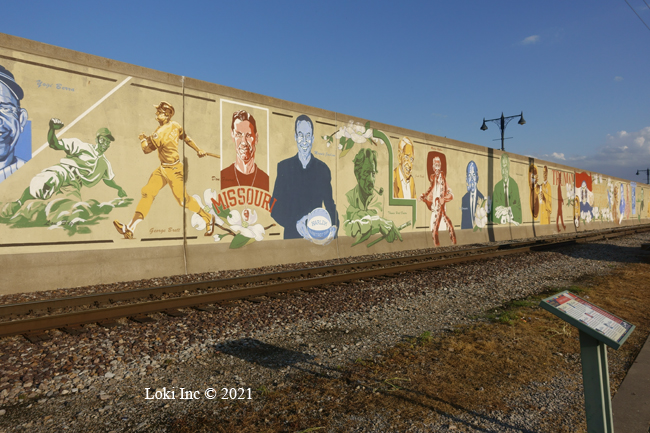
A Stroll Along the Great Wall of Cape Girardeau
Here are some pics from our journey down the great wall, on a warm spring evening in early May. Photos includes panels from both murals (and more).
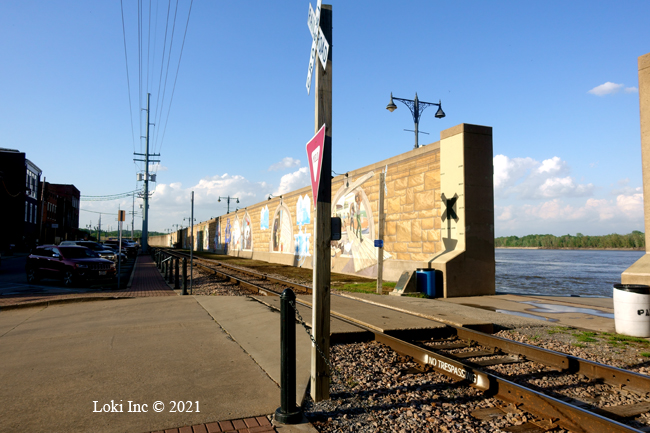

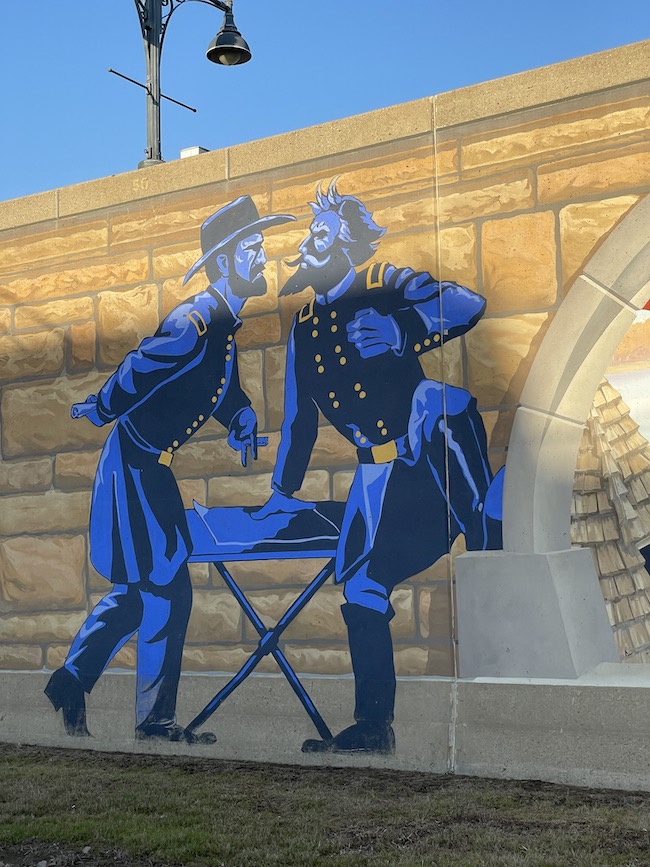
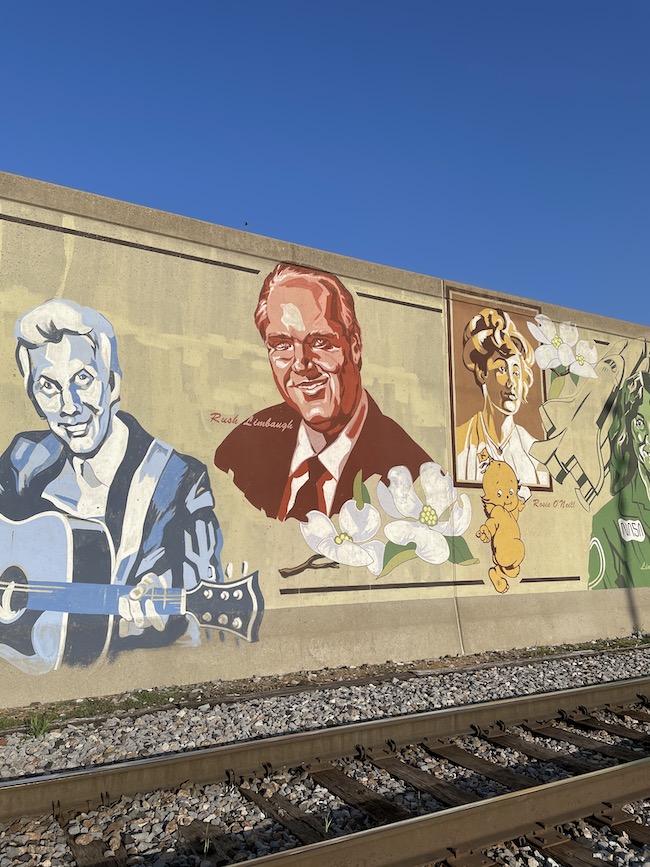
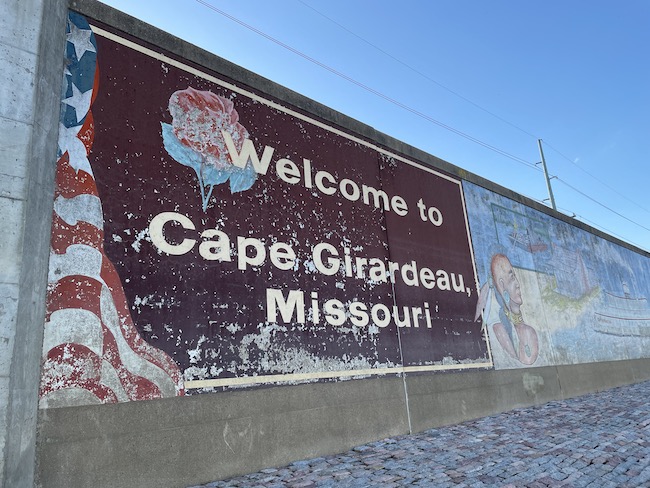
Along the riverfront, there exist even more welcoming murals — although faded. It features prominent Cape Girardeau buildings and local history.
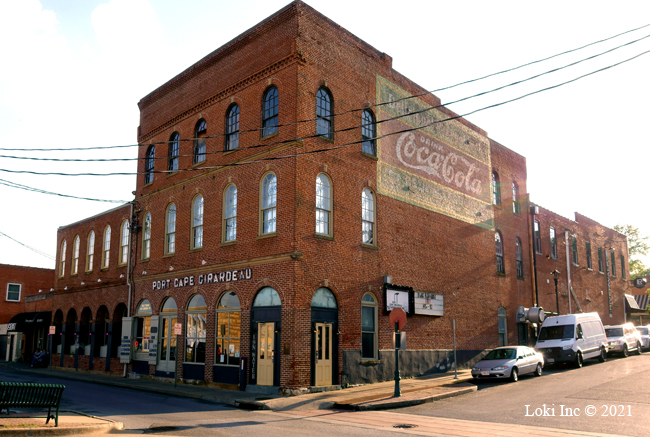
Across the street from the great wall stands the Filburn & Sloan Commission House, where purportedly, Gen. Grant stayed for a wee bit before heading off to Vicksburg, Shiloh and the White House. This street was known as “Warehouse Row,” because of its easy access to the river. The Filburn & Sloan Commission House served as one of these warehouses.
Check out the cool Coca-Cola mural on the former Filburn & Sloan Commission House, now referred to as the Port Cape Girardeau building. It was painted sometime around 1940 and rediscovered in 1978 after the building underwent a major sandblasting. The Coca-Cola Company supported restoration of the mural.
I highly recommend a getaway to Cape Girardeau, aka the “City of Roses.” Steeped in history, old-world culture and frankly, boasting some really tasty eating places, you won’t be sorry that you took a riverside stroll.

